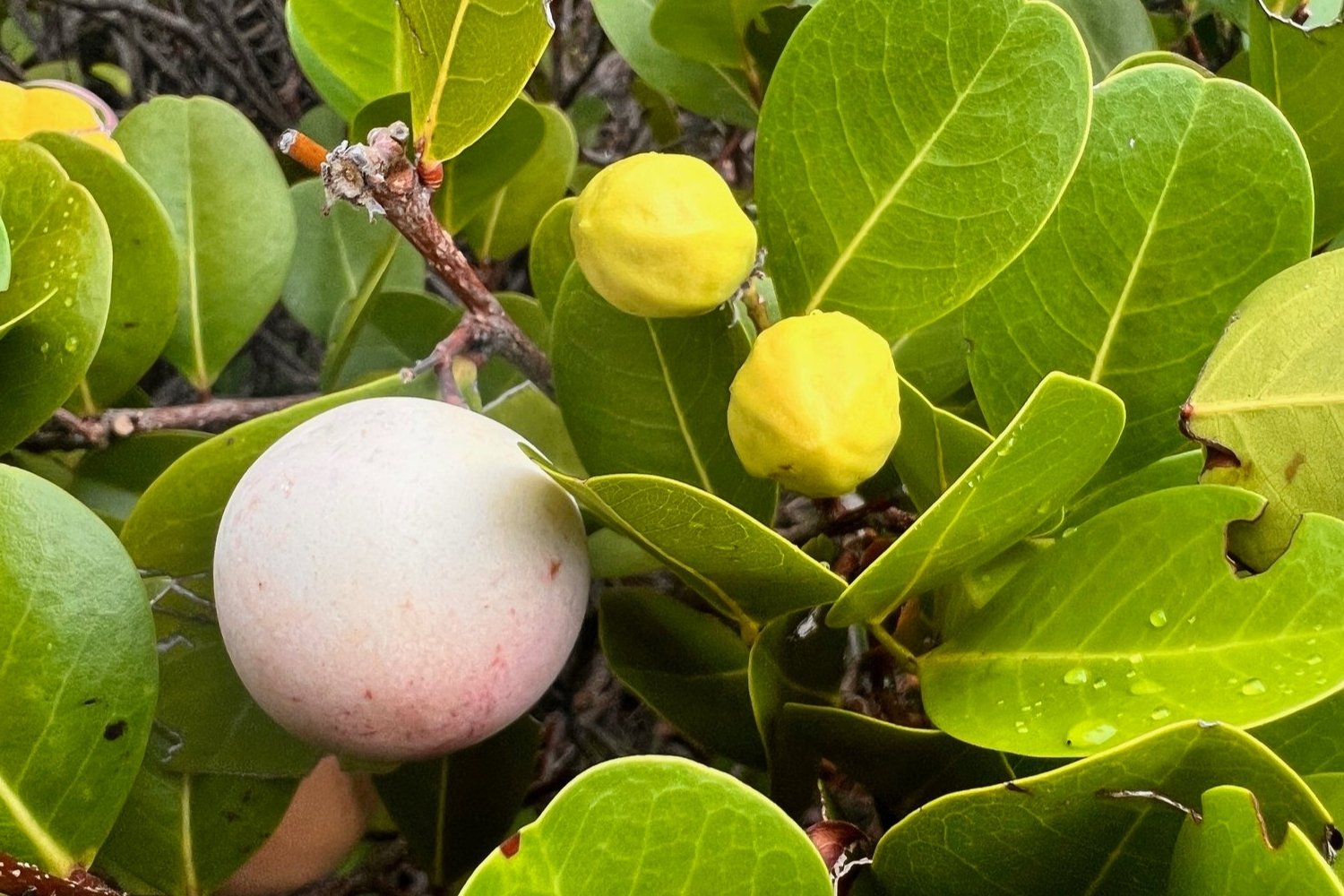
What is a Cocoplum? The Cocoplum is a versatile plant found in tropical and subtropical regions. Known scientifically as Chrysobalanus icaco, this plant thrives in coastal areas, often forming dense thickets. Its shiny, dark green leaves and small, white flowers make it a popular choice for landscaping. The fruit, which can be red, purple, or black, is edible and often used in jellies and preserves. Besides its culinary uses, Cocoplum provides essential habitat for wildlife and helps prevent coastal erosion. Whether you're a gardener, a nature enthusiast, or just curious, learning about Cocoplum can be both fun and informative.
What is Cocoplum?
Cocoplum, also known as Chrysobalanus icaco, is a tropical fruit native to the Americas. It thrives in coastal areas and is popular for its sweet, edible fruit. Let's dive into some fascinating facts about this unique plant.
-
Cocoplum is native to tropical regions of the Americas, including Florida, the Caribbean, and Central and South America.
-
The plant is often found in coastal areas, thriving in sandy soils and salt-tolerant environments.
-
Cocoplum can grow as a shrub or small tree, reaching heights of up to 20 feet.
-
The leaves of the Cocoplum are thick, leathery, and dark green, providing a lush appearance.
-
Cocoplum produces small, white flowers that bloom throughout the year.
The Fruit of Cocoplum
The fruit of the Cocoplum is what makes this plant truly special. It is not only delicious but also packed with nutrients.
-
Cocoplum fruit is round or oval, typically measuring 1-2 inches in diameter.
-
The fruit's skin can be purple, red, or yellow, depending on the variety.
-
Inside, the flesh is sweet and juicy, with a flavor reminiscent of plums and almonds.
-
Cocoplum fruit is rich in vitamins A and C, which are essential for maintaining healthy skin and immune function.
-
The fruit also contains dietary fiber, aiding in digestion and promoting a healthy gut.
Uses of Cocoplum
Cocoplum is not just a tasty treat; it has various uses that make it a valuable plant.
-
The fruit can be eaten fresh, straight from the tree.
-
Cocoplum is often used to make jams, jellies, and preserves due to its sweet flavor.
-
The fruit can be dried and used as a natural sweetener in various dishes.
-
Cocoplum leaves have been used in traditional medicine to treat ailments such as diarrhea and inflammation.
-
The plant is also used in landscaping for its attractive foliage and ability to stabilize sandy soils.
Growing Cocoplum
Interested in growing your own Cocoplum? Here are some tips to get you started.
-
Cocoplum prefers full sun but can tolerate partial shade.
-
The plant thrives in well-draining, sandy soils but can adapt to various soil types.
-
Cocoplum is drought-tolerant once established, making it a low-maintenance option for gardeners.
-
It can be propagated from seeds or cuttings, with seeds taking longer to germinate.
-
Regular pruning helps maintain the plant's shape and encourages healthy growth.
Wildlife and Cocoplum
Cocoplum plays a significant role in its ecosystem, providing food and shelter for various wildlife species.
-
Birds are attracted to Cocoplum fruit, which provides a valuable food source.
-
The dense foliage offers shelter and nesting sites for birds and small mammals.
-
Bees and other pollinators are drawn to the plant's flowers, aiding in pollination.
-
Cocoplum can help prevent coastal erosion by stabilizing sandy soils with its extensive root system.
-
The plant's ability to thrive in harsh coastal conditions makes it an important part of coastal ecosystems.
Interesting Facts About Cocoplum
Here are some more intriguing tidbits about this versatile plant.
-
Cocoplum is sometimes called "Paradise Plum" due to its delightful taste and tropical origins.
-
The plant is a member of the Chrysobalanaceae family, which includes other fruit-bearing trees and shrubs.
-
Cocoplum has been used in traditional Caribbean cuisine for centuries.
-
The fruit's seeds are large and hard, often used in crafts and jewelry making.
-
Cocoplum is resistant to many pests and diseases, making it a hardy choice for gardeners.
Cultural Significance of Cocoplum
Cocoplum holds cultural importance in various regions where it is native.
-
In the Caribbean, Cocoplum is often associated with folklore and traditional stories.
-
The fruit is a popular ingredient in local dishes and beverages.
-
Cocoplum is sometimes used in religious ceremonies and rituals.
-
The plant's resilience and ability to thrive in harsh conditions symbolize strength and endurance in many cultures.
-
Cocoplum has been featured in art and literature, celebrating its beauty and significance.
-
The plant's name, "Cocoplum," is derived from the Spanish word "coco," meaning coconut, and "plum," reflecting its unique appearance and taste.
Final Thoughts on Cocoplum
Cocoplum is more than just a pretty plant. Its versatile uses and nutritional benefits make it a valuable addition to any garden or diet. From its edible fruits to its medicinal properties, this plant offers a lot. It thrives in various climates, making it accessible to many. Plus, its environmental benefits like soil stabilization and providing habitat for wildlife can't be overlooked. Whether you're a gardener, a health enthusiast, or someone who loves nature, cocoplum has something for you. So next time you see this plant, remember it's not just another shrub. It's a powerhouse of benefits waiting to be explored. Keep an eye out for cocoplum and consider adding it to your life. You'll be glad you did.
Was this page helpful?
Our commitment to delivering trustworthy and engaging content is at the heart of what we do. Each fact on our site is contributed by real users like you, bringing a wealth of diverse insights and information. To ensure the highest standards of accuracy and reliability, our dedicated editors meticulously review each submission. This process guarantees that the facts we share are not only fascinating but also credible. Trust in our commitment to quality and authenticity as you explore and learn with us.
